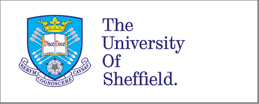Welcome to EMS15 
“The EMS Network has been organised to fill an important gap in terms of electroacoustic music, namely focusing on the better understanding of the various manifestations of electroacoustic music. Areas related to the study of electroacoustic music range from the musicological to more interdisciplinary approaches, from studies concerning the impact of technology on musical creativity to the investigation of the ubiquitous nature of electroacoustic sounds today. The choice of the word, ‘network’ is of fundamental importance as one of our goals is to make relevant initiatives more widely available.” (http://www.ems-network.org)
University of Sheffield: 23-26 June 2015 
EMS15 Conference Theme: The Art of Electroacoustic Music.
Keynote Speakers and invited performers
Tatjana Böhme-Mehner, Annette Vande Gorne
Tatjana Böhme-Mehner, Annette Vande Gorne
Venues 
Paper Venue: Humanities Research Institute (googlemap)
Concert Venue: Drama Studio (googlemap)
University Map download for building 196 (HRI) and 74 (Drama Studio)
It has been just over a century since Russolo's Art of Noises...and we have come a long way. Or have we? This theme considers the creation and performance of electroacoustic music and the nature of sonic evolution, revolution, and revelation. We may revel in the beauty of organized sounds, the challenges faced by the contemporary listener and the fascination of 'the new', but where is the dividing line between originality and absurdity?
In creation we are concerned with questions of unity versus diversity, style versus idea and the language of electroacoustic music.
In performance we are concerned with the question 'what is the work?' and the way in which we negotiate the work with very fragile audiences. We welcome papers that further define a language of electroacoustic music, especially with regards to Human Computer Interaction (technology) and creative communities (aesthetics).
Additionally we welcome papers that interrogate composition and performance as an open or closed paradigm.
Finally we welcome papers that fall within the overarching themes of EMS.
Conference Co-Chairs
Adrian Moore
Adam Stansbie
Steering Committee
Marc Battier
Leigh Landy
Daniel Teruggi
Organizing Committee
ADDITIONAL EMS15 THEMES
The conference is also open to other topics relevant to the history and/or contemporary practice of electroacoustic music. We encourage the submission of papers relating to any aspect of the field, including but not limited to analysis, perception, listening, terminology, composition, performance, cultural issues and education.
Analysis:
- What types of discourse are relevant to electroacoustic works?
- Which analytical methods are currently being developed?
- Can one adapt existent analytical methods of music to electroacoustic works, many of which involve no prescriptive notation?
- How can we further develop the field of study of electroacoustic musics?
Transcription and representation of sound, new audio-visual tools:
- How are analytical tools being produced and disseminated in the community?
- Which means are available for communicating this sonic art form through symbolic and graphic representations?
- Does the study of electroacoustic musics require specifically designed tools or can it take advantage of methods conceived for other musics?
Taxonomy, terminology - 'meaningful' units of music description:
- Which systems of classification are in use or should be developed?
- How can we become more consistent in our use of terminology in a field as dynamic as electroacoustic music?
Real-time music making:
- How can live performance/composition strategies be analysed?
- What is 'live' electronic music?
Performance, presentation, dissemination:
- What is the 'work'?
- New presentation spaces, technologies.
- Aesthetical and musical issues raised by Internet communities, group compositions, telematics and performances.
Listening, Intention-Reception
- Issues of perception and interpretation.
- How do the composer's intentions relate to what is perceived?
Semiotics/semiology, 'meaning':
- What (and how) do different electroacoustic music genres express?
Soundscape, sound ecology:
- Analytical tools for the understanding of soundscapes.
- New approaches to sound ecology, sonification, sound environment.
Genres/styles, 'languages':
- Questions of unity, diversity, plurality, multicultural resources, polystyle, hybridisation, 'local music
Gender issues:
- Have gender balances shifted since the early days?
- The relationship between technology/electroacoustic music and gender.
- Unrecognised contributions: revising history.
Research on history of electroacoustic music:
- Research on historical documentation.
- Studies on the genesis, development and activities of private and public studios.
- How can and should we revise history?
Socio-cultural issues:
- What are the socio-cultural ramifications of electroacoustic music?
Pedagogy:
- Curriculum design.
- Balance between theory and practice, general and specific approaches.
- Real-time and interaction versus fixed medium and studio techniques.
- Teaching material: how to select it, and language issues.


